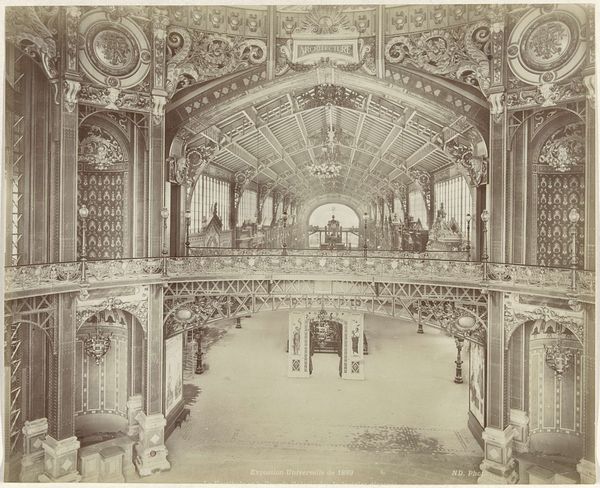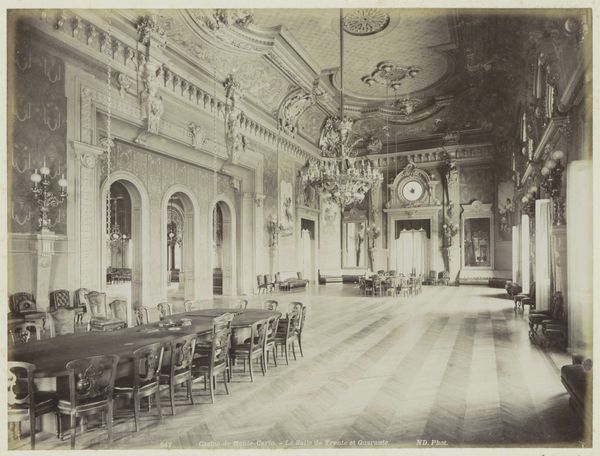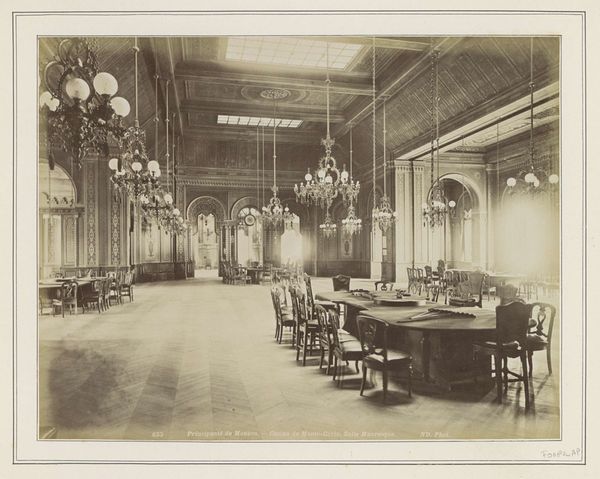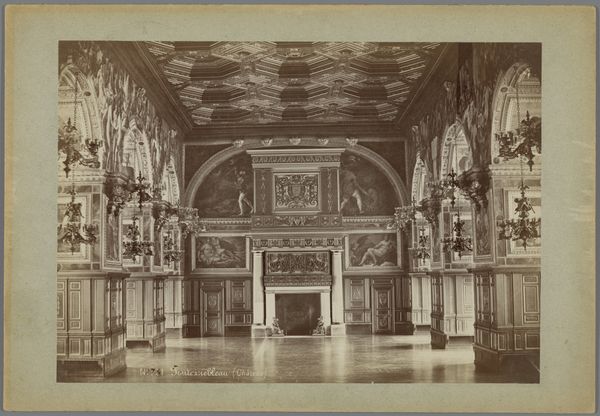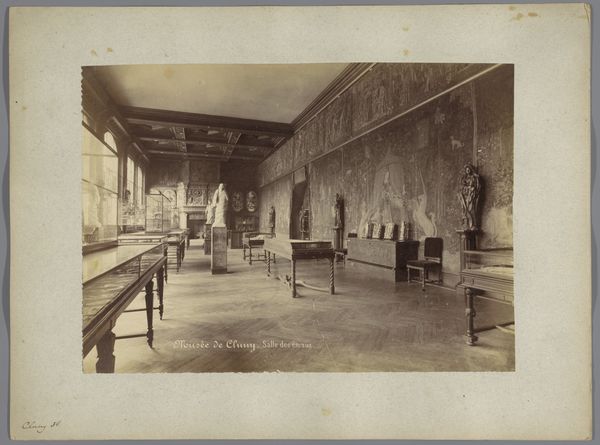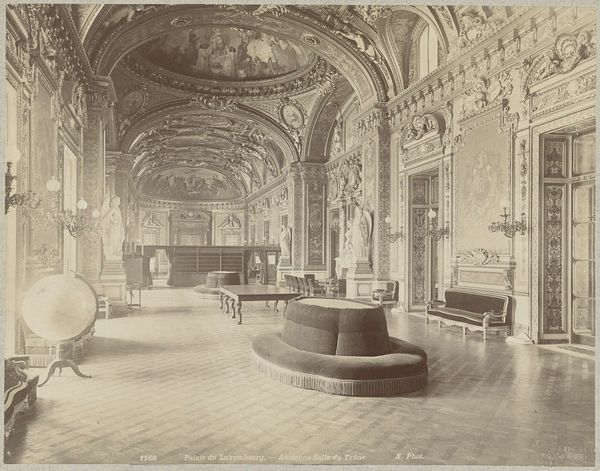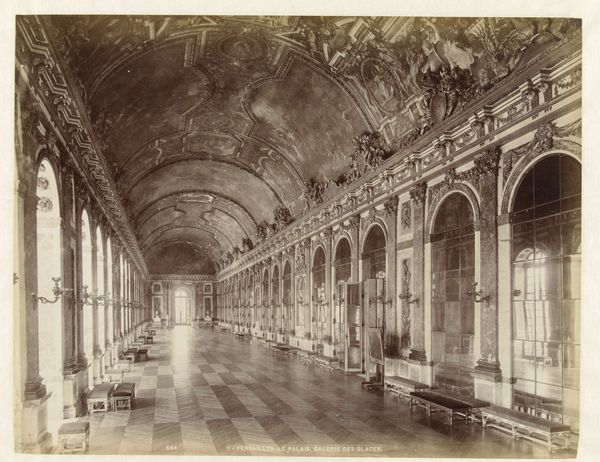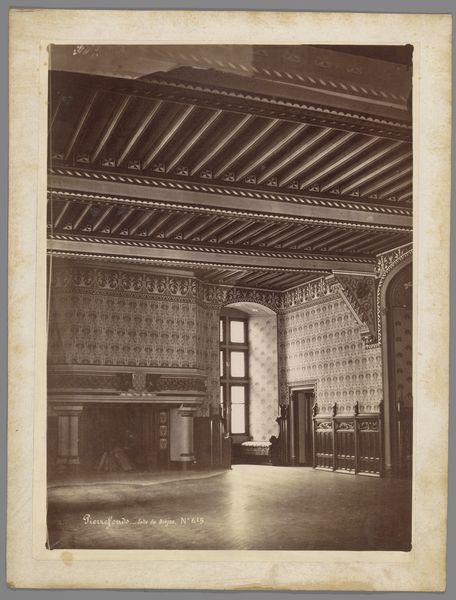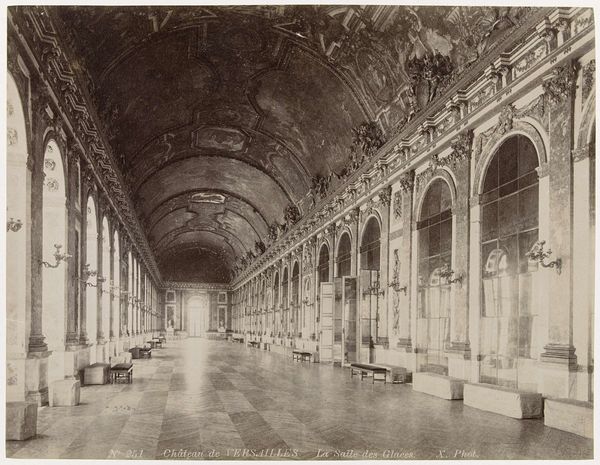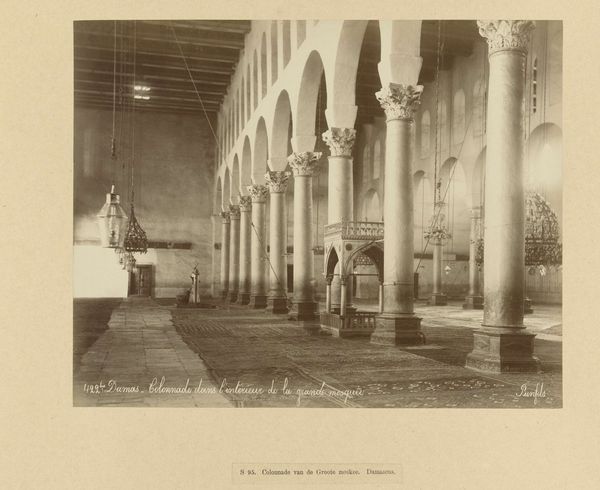
Dimensions: height 103 mm, width 153 mm
Copyright: Rijks Museum: Open Domain
Georg Jagemann made this albumen print of the interior of the Wartburg banqueting hall in Eisenach, Germany, sometime in the mid-19th century. The image allows us to reflect on the cultural and institutional forces that shape how we see the past. The Wartburg was originally a medieval castle with strong associations to German national identity. In the 19th century, it was rebuilt in a romantic, neo-medieval style. Jagemann’s image captures a key interior space, emphasizing its imposing scale and elaborate decoration. This was a period of rising nationalism across Europe, and the Wartburg was consciously being reimagined as a monument to German history and culture. Consider how photography itself was becoming a key tool in constructing and disseminating national narratives. Images like this helped to solidify a particular vision of German heritage. Historical research into the archives of the Wartburg and studies of 19th-century German nationalism can help us understand the photograph's role in shaping cultural memory.
Comments
No comments
Be the first to comment and join the conversation on the ultimate creative platform.
